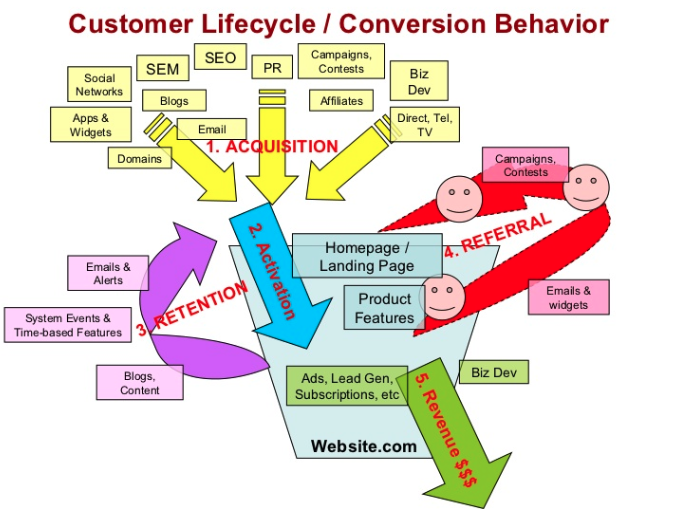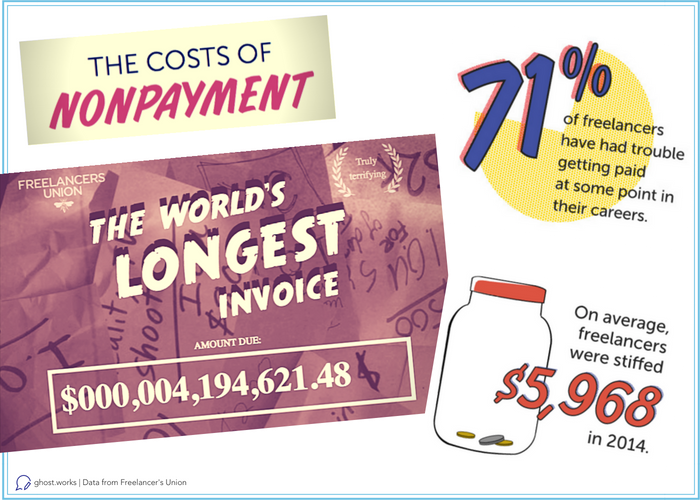This is the second in a series of articles exploring growth hacking tips and tricks, which is top-of-mind as I’m doing a mini-degree program in Growth Marketing from the CXL Institute. Read more: What is growth hacking?
***
The key to effective growth marketing is experimentation. It’s everything. Here’s what you need to know about running a growth marketing experiment.
Step 1: Define
The first step is to define your objective. This is essential. Your objective should be extremely focused on a single metric that you want to influence.
Your objective should be specific and precise.
For instance, an objective of “increasing awareness of our brand” is far too general. How would you measure success? If the objective is to broaden and imprecise, it becomes impossible to judge whether or not your experiment delivered results.
A better objective would be to identify the specific metric to focus on: newsletter sign-ups, email open rates, landing page conversions, completed sales made, top-of-the-funnel leads or demos scheduled.
Another option is to use “pirate metrics” to select a specific part of the funnel for this particular experiment to focus on. It’s AARR:
- Acquisition: Tippy top of the funnel; it’s all awareness as a new person discovers your product service or website
- Activation: You’ve captured attention and an acquired customer “activates” by taking an action.
- Retention: Ongoing engagement as you nurture users so they return again to engage with your website or to consider your product
- Referral: You’ve delivered an experience that’s worth sharing with friends
- Revenue: Users purchase something or are otherwise monetized

At the end of the first step, you should have a clear focus: either a specific metric (ideal) or at least one part of the customer lifecycle
Step 2: Hypothesize
Next, you make a hypothesis. This is the time to leverage your expertise about the customer journey. You want to understand the customer’s needs at the specific touchpoint defined in Step 1.
The hypothesis should be framed like this:
Doing THIS [the experiment] will result in THAT [the predicted impact] because of these assumptions.
An example: Let’s say that you are focusing on increasing paid sign-ups from your main newsletter. Your hypothesis could be “Increasing sending more emails will result in more sign-ups because those getting more emails are more likely to buy.”
Your assumptions are actually one of the most important parts as it’s where you share your expertise. Make sure that your assumptions are from the user’s perspective! Your thorough understanding of the customer journey improves the accuracy of your assumptions. It’s all about putting the user at the center of your marketing, so that your marketing is more effective and get you better results.
Step 3: Set up the experiment
Even if unsuccessful at improving business outcomes, each growth marketing experiment offers learnings that can be used in future experiments. But you need to set your experiments up correctly so that these learnings are accurate and thus useful! The last thing you want is to have bad data influence your business decisions.
The three components of a proper experiment:
- Independent variable, or the thing that you’ll change to test its impact on the dependent variable.
- Dependent variable, or the thing being measured/tested.
- Control group, or the group that will be the baseline for comparison. Nothing changes for the control group.
Since the independent variable causes a change in the dependent variable, you want to be careful to Choose an independent variable that directly impacts the dependent variable, and doesn’t cause a bunch of other changes that you can’t measure. Precision is your friend!
Let’s continue the example above about increasing paid sign-ups from the newsletter. It doesn’t make sense to simply start increasing the number of emails sent out to everyone on the list. Since you have people who have been on the list for different lengths of time, you’ll never be able to truly know if sending more emails worked.
To set this experiment up correctly, you could segment your newsletter into two groups based on when they subscribed. You’ll take the older subscribers as the control group.
Another approach would be to focus only on the newest subscribers and split that group into two segments: A control group that gets the current email sequence and the other that receives the experimental sequence with more meals.
TIP: When experimenting on a part of the funnel or on a metric for the first time, start with a very basic A/B test. That’s because you need to deep in your understanding of how your experiments may change behavior. If you dive into a new area with an overly complex experiment, it will be difficult to analyze results.
Step 4: Implement
Noticed that implementation is towards the end of the process. Proper planning and set up are the bulk of this work!
When you implement the experiment, set an expiration. Whether it’s for a specific time frame or for a certain number of users, you need a clear endpoint. Do you want to move fast and do multiple experiments so avoid driving individual experiments out for too long. It’s better to set small
Step 5: Analyze
As you analyze the experiment, look not just at the success or failure of the experiment itself. Carefully observe anything unexpected that may reveal helpful insights about the customer journey, your customer’s mindset at this specific touchpoint, or anything else relevant.
At this step, you’ll evaluate the experiment impact on metrics:
- Did it increase open rates?
- Did it influence purchase frequency?
- Were there more sign-ups?
- Did it improve click through rates?
Your analysis can be simple: It answers the hypothesis. “Increasing the number of emails for new subscribers increased conversions to paid sign-ups by 5% when compared to the control group.”
Then it can go down another level: “
For successful experiments, you’ll then want to further optimize to squeeze the most value out of this particular path. Then, automate so that you can set it and forget it. In our example, you would replace the existing email sequence with the new sequence, which will then automatically send out more emails to your new subscribers without you having to do anything else.
As you stack one success on another, you build incremental value that compounds over time. That is the true power of growth: it’s not linear but exponential!
Step 6: Share
Sharing is caring! Take the time to share out your learnings with other groups in your company. By doing so, you not only raise the profile of the growth marketing effort but you also potentially gain advocates across the company. Show your work and build the continued case for investing in growth marketing.
Since growth marketing is a collaboration across departments, Take any opportunity you can to show value and build goodwill. You never know when you’re going to need some help — or when a specific insight proves valuable to another team’s work!
***
Look for the next article in this series next Monday. In the meantime, here’s why growth hacking isn’t brand marketing.



